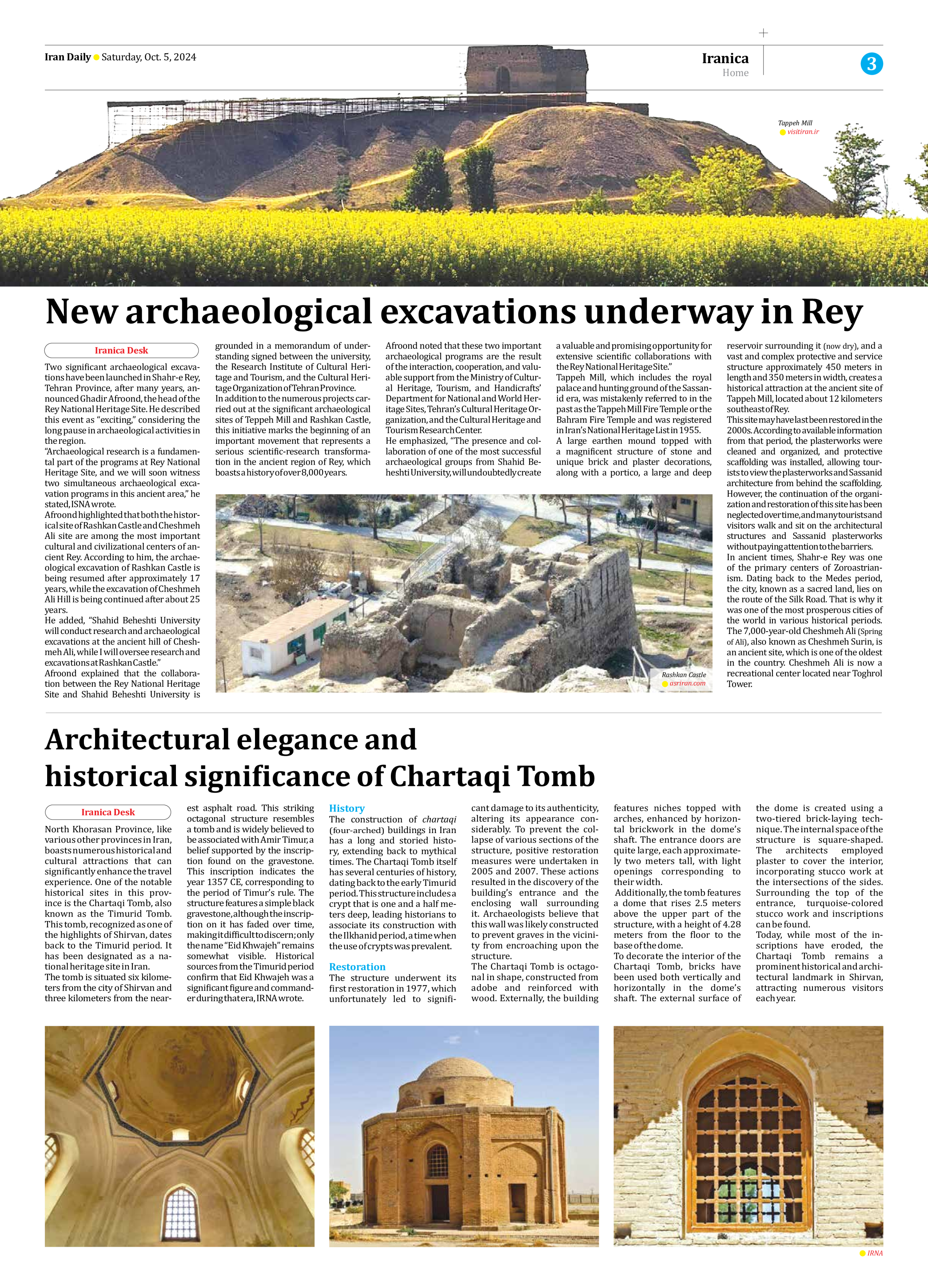
Architectural elegance and historical significance of Chartaqi Tomb
North Khorasan Province, like various other provinces in Iran, boasts numerous historical and cultural attractions that can significantly enhance the travel experience. One of the notable historical sites in this province is the Chartaqi Tomb, also known as the Timurid Tomb. This tomb, recognized as one of the highlights of Shirvan, dates back to the Timurid period. It has been designated as a national heritage site in Iran.
The tomb is situated six kilometers from the city of Shirvan and three kilometers from the nearest asphalt road. This striking octagonal structure resembles a tomb and is widely believed to be associated with Amir Timur, a belief supported by the inscription found on the gravestone. This inscription indicates the year 1357 CE, corresponding to the period of Timur’s rule. The structure features a simple black gravestone, although the inscription on it has faded over time, making it difficult to discern; only the name “Eid Khwajeh” remains somewhat visible. Historical sources from the Timurid period confirm that Eid Khwajeh was a significant figure and commander during that era, IRNA wrote.
History
The construction of chartaqi (four-arched) buildings in Iran has a long and storied history, extending back to mythical times. The Chartaqi Tomb itself has several centuries of history, dating back to the early Timurid period. This structure includes a crypt that is one and a half meters deep, leading historians to associate its construction with the Ilkhanid period, a time when the use of crypts was prevalent.
Restoration
The structure underwent its first restoration in 1977, which unfortunately led to significant damage to its authenticity, altering its appearance considerably. To prevent the collapse of various sections of the structure, positive restoration measures were undertaken in 2005 and 2007. These actions resulted in the discovery of the building’s entrance and the enclosing wall surrounding it. Archaeologists believe that this wall was likely constructed to prevent graves in the vicinity from encroaching upon the structure.
The Chartaqi Tomb is octagonal in shape, constructed from adobe and reinforced with wood. Externally, the building features niches topped with arches, enhanced by horizontal brickwork in the dome’s shaft. The entrance doors are quite large, each approximately two meters tall, with light openings corresponding to their width.
Additionally, the tomb features a dome that rises 2.5 meters above the upper part of the structure, with a height of 4.28 meters from the floor to the base of the dome.
To decorate the interior of the Chartaqi Tomb, bricks have been used both vertically and horizontally in the dome’s shaft. The external surface of the dome is created using a two-tiered brick-laying technique. The internal space of the structure is square-shaped. The architects employed plaster to cover the interior, incorporating stucco work at the intersections of the sides. Surrounding the top of the entrance, turquoise-colored stucco work and inscriptions can be found.
Today, while most of the inscriptions have eroded, the Chartaqi Tomb remains a prominent historical and architectural landmark in Shirvan, attracting numerous visitors each year.







